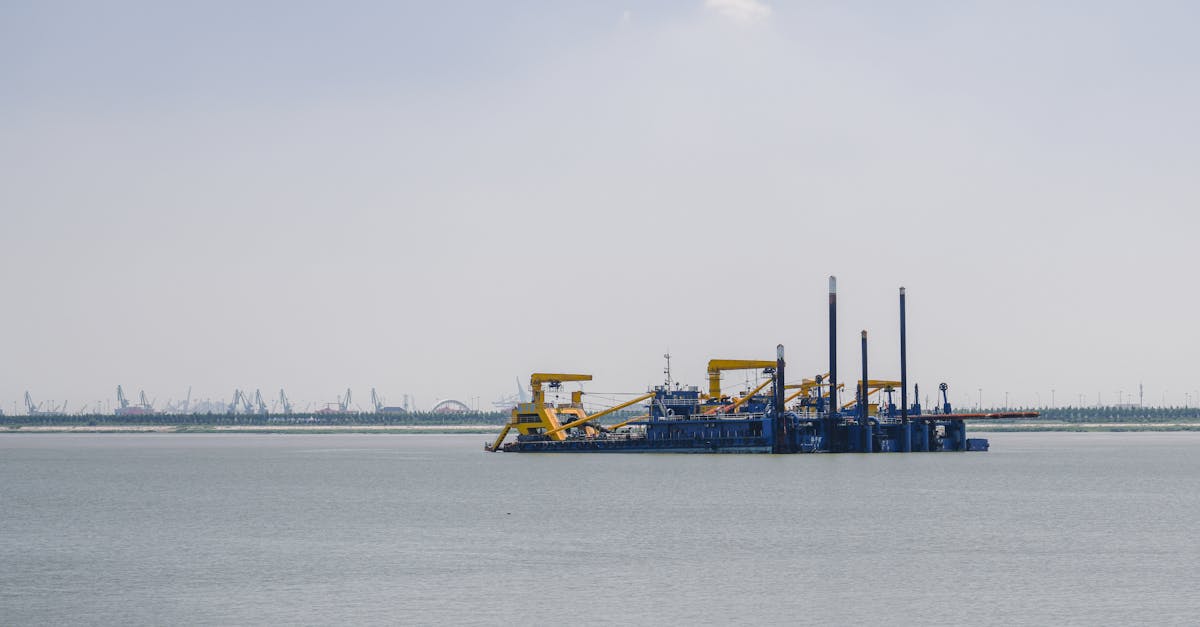
Table Of Contents
At Dry Fast, our Water Extraction service is essential for effectively addressing water damage in your home or business. Our team of skilled professionals employs advanced equipment and techniques to swiftly remove excess water from affected areas, minimizing the risk of mold growth and structural damage. We understand the urgency that comes with water-related emergencies, which is why we are committed to providing prompt and efficient services. Whether it's from a burst pipe, flooding, or a leaky roof, you can trust Dry Fast to restore your property to its pre-loss condition, ensuring a safe and dry environment for you and your loved ones.
Emergency Water Extraction Services
Water extraction is a critical service needed to address the aftermath of flooding or water leaks. Professionals equipped with specialized tools quickly assess the situation, ensuring that excess water is removed effectively to minimize damage. Advanced techniques such as industrial pumps and dehumidifiers help restore affected areas, protecting structures from deteriorating and preventing mold growth.
In emergencies, time is of the essence. Delays in water extraction can lead to significant structural damage, which often requires costly repairs. Relying on experienced technicians ensures a swift response, allowing for a thorough evaluation of water damage and the implementation of a comprehensive restoration plan. Immediate action not only protects your property but also enhances the overall safety of the living environment.
When to Call a Professional
Identifying the right moment to seek professional help can significantly impact the outcome of water damage restoration. If you notice extensive flooding or water accumulation, especially from a broken pipe or significant weather event, it’s crucial to call a professional immediately. Their expertise can ensure proper assessment of damage and the necessary techniques for effective extraction and drying. Delaying professional intervention may lead to mold growth or structural damage, making the situation far worse.
Additionally, if the water source is unknown or contaminated, professional services are essential. This includes scenarios involving sewage backflow or water from natural disasters, which can pose health risks. Trained technicians have the tools and knowledge to handle hazardous situations safely. Managing water damage can be complex, and having an expert team can save time and prevent further complications in the restoration process.
DIY Water Extraction
Homeowners may find themselves dealing with minor water issues and consider taking matters into their own hands. Basic tools like towels, mops, and wet/dry vacuums can be effective for quick clean-ups. It's essential to act promptly to minimize damage. Start by turning off the water source if possible, then work to remove standing water. Drying out affected areas swiftly can help prevent mold growth and further deterioration.
While DIY methods can be suitable for small spills or leaks, they come with challenges. Hidden moisture in walls or flooring may remain even after a surface clean-up, potentially leading to mold issues later. Additionally, dealing with contaminated water can pose health risks. In such cases, professional assistance is often necessary to ensure thorough extraction and proper drying to safeguard the home and its occupants.
Risks and Limitations of SelfService Solutions
Attempting to address water damage through DIY methods often leads to unforeseen complications. Homeowners may underestimate the extent of the damage, particularly when water infiltrates areas behind walls or under flooring. Inadequate drying can foster mold growth, posing health risks long after the visible signs of moisture have been addressed. Additionally, using standard household fans or dehumidifiers may not suffice for larger or more severe water issues, leading to further deterioration.
Limited experience with water extraction techniques can result in improper handling of equipment and materials. Specialized tools designed for water extraction and restoration are often necessary for effective remediation. Without proper training, individuals may overlook essential safety protocols, including the risk of electrical hazards, which can arise from dealing with standing water in contact with wiring. Such oversights can complicate the restoration process, potentially causing greater damage and increasing repair costs in the long run.
Preventing Future Water Damage
Regular maintenance of your home's drainage systems can significantly reduce the risk of water damage. Inspect gutters and downspouts frequently to ensure they are clear of debris. It's essential to direct downspouts away from the foundation to prevent water pooling around your home. Additionally, check for any cracks in the foundation and seal them promptly to keep water from seeping inside.
Understanding the environment around your property is crucial in preventing water damage. Landscaping choices can either help or hinder drainage. Planting shrubs and trees with deep roots can absorb excess water, while ensuring soil slopes away from the house minimizes pooling near foundations. Installing a sump pump in areas prone to flooding can also provide extra protection during heavy rainfall, safeguarding your home from unexpected damage.
Tips for Homeowners to Mitigate Risks
Regular maintenance of your property's plumbing system can significantly reduce the risk of water damage. Periodically inspect pipes for leaks or signs of wear, specifically in areas prone to moisture, such as basements and crawl spaces. Maintaining gutters and downspouts so they direct water away from your foundation is crucial. Consider installing a sump pump if you live in an area susceptible to flooding. Taking these proactive measures can help minimize potential issues.
Additionally, creating an emergency plan can be beneficial in the event of unexpected water damage. Ensure that all household members know the location of the main water shut-off valve. Educate them on how to respond quickly should a leak occur. Keep emergency contact numbers for local restoration services readily available. Having a plan in place can save time and lessen the stress of dealing with water-related emergencies.
FAQS
What is water extraction?
Water extraction is the process of removing excess water from a property, typically following a flooding event, leak, or other water damage incidents. It aims to prevent further damage and reduce the risk of mold growth.
When should I call a professional for water extraction?
You should call a professional for water extraction if the water damage is extensive, if the source of water is contaminated (such as sewage), or if you are unsure about the safety of the affected area.
Can I perform water extraction myself?
Yes, you can perform water extraction yourself for minor incidents using tools like wet/dry vacuums and towels. However, for serious cases, it's advisable to seek professional help to ensure thorough extraction and to prevent health hazards.
What are the risks of DIY water extraction?
The risks of DIY water extraction include inadequate removal of water, which can lead to mold growth, structural damage, and potential exposure to harmful contaminants, especially if the water is from a contaminated source.
How can I prevent future water damage in my home?
To prevent future water damage, ensure proper maintenance of plumbing systems, install sump pumps in flood-prone areas, monitor humidity levels, and regularly check for leaks or water intrusion points in your home.

